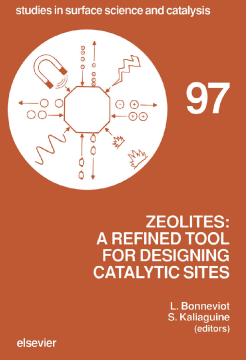
Additional Information
Book Details
Abstract
Formerly, the catalytic use of zeolites was exclusive to the field of acid catalysis. Nowadays, zeolites also find applications as catalysts in a wide array of chemical reactions such as; base catalyzed reactions, Redox reactions and catalytic reactions on transition metals and their complexes in confined environments. The concepts of Brønsted or Lewis acid-base pairs are adequately illustrated in the literature and well-understood in terms of structural and electronic properties of zeolites. By contrast, properties of chemically modified silicates, aluminosilicates and aluminophosphates have not yet been fully explored. The list of oxydo-reduction reactions performed in the presence of these new materials is growing as demonstrated by the selective catalytic reduction of nitrogen oxides or the numerous oxidations employing hydrogen peroxide. Much effort is currently being made to get a better insight into the nature of the sites involved. The zeolite lattice may also be used as a host for encapsulated complexes or metallic clusters allowing the control of nuclearity of these active species and the steric constraints imposed on the reactants. Molecular sieve and shape selectivity effects have also constituted fascinating aspects of zeolite properties. Recent developments leading to increasingly large pore sizes with VPI-5, cloverite and more recently mesoporous molecular sieves have broadened the spectrum of these applications. Indeed, larger and larger reactant and product molecules can be accommodated in these lattices. These new adsorbant/adsorbate systems create additional needs for experimental data and theoretical descriptions of transport properties, in particular of mono- and multi-components diffusion coefficients in the zeolite pore lattice.
All these themes, representing the forefront and current trends in zeolite research, were discussed in the submitted papers to the symposium and are widely represented in the selected papers contained in this volume. A feature common to most of these contributions is the combined use of a variety of analytical techniques. Some of these techniques are at the frontier of the latest analytical developments such as multiple scattering EXAFS and bidimensional MAS-NMR.
Mark E. Davis, California Institute of Technology
... In addition to numerous good papers containing previously unpublished work, the volume contains eight papers that are concise overviews (from plenary and keynote lectures).... The combined works of this volume do present a fairly accurate picture of zeolites and zeolite-like molecular sieves as refined tools for designing catalytic sites.
Journal of the American Chemical Society
